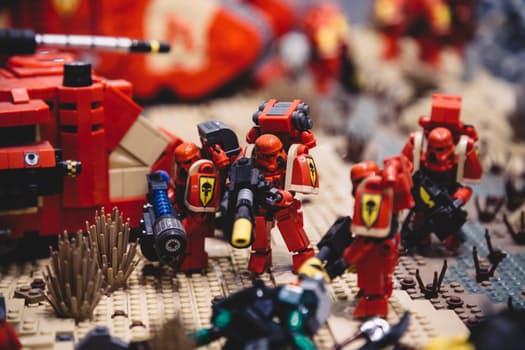The Stuttgart Health Clinic
In the United States, emergency rooms treated 251,800 toy-related injuries, according to the report issued last year from the U.S. Consumer Product Safety Commission (CPSC). And, 44 percent of the injuries were to the head and face area, the area of the body with the most injuries. An estimated 84,400 of all toy-related injuries, or 34 percent, happened to children younger than 5 years of age.
In addition, a new study published in JAMA Ophthalmology, “Epidemiology of Sports-Related Eye Injuries in the United States,” found that basketball, baseball, and air guns were the most common causes of injury, accounting for almost half of all primary sports-related eye injuries. An eye care professional can provide recommendations for the best protection for each sport and athlete.
December is Safe Toys and Gifts Awareness month and offers additional tips including:
- Avoid toys that shoot or include parts that fly off.
- Ask yourself or the parent if the toy is right for the child’s ability and age. Review the recommended age for that particular toy as this also addresses safety. Consider whether other smaller children may be in the home that may have access to the toy.
- Avoid purchasing toys with sharp or rigid points, spikes, rods, or dangerous edges.
- Buy toys that will withstand impact and not break into dangerous shards.
- Look for the letters “ASTM.” This designation means the product meets the national safety standards set by ASTM International.
- Don’t give toys with small parts to young children. Young kids tend to put things in their mouths, increasing the risk of choking. If any part of a toy can fit in a toilet paper roll, the toy is not appropriate for children under the age of 3.
- Do not purchase toys with long strings or cords, especially for infants and very young children as these can become wrapped around a child’s neck.
- Always dispose of uninflated or broken balloons immediately.
- Magnets, like those found in magnetic building sets and other toys, can be extremely harmful if swallowed. Seek immediate medical attention if you suspect a child may have swallowed a magnet.
- KidsHealth.org recommends that bicycles, scooters, skateboards, and inline skates should never be used without helmets that meet current safety standards and other recommended safety gear, like hand, wrist and shin guards.
- Read all warnings and instructions on the box.
- Always supervise children and demonstrate to them how to use their toys safely.
- Test small toys or parts for safety. Try this with a cardboard toilet paper roll. If items can fit into the roll, they are too small and should be kept away from young children. You can also buy a small-part toy tester at a toy store.
For more information on safe toys and gifts for children, visit preventblindness.org/safe-toy-checklist. For more information on sports eye protection and safety, visit www.preventblindness.org/sports-eye-safety.

